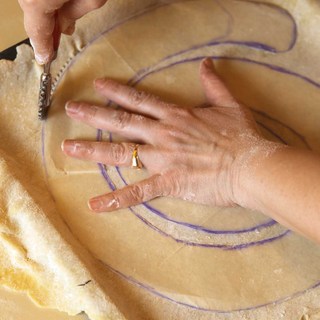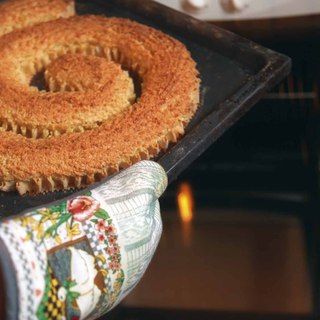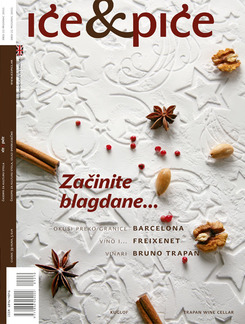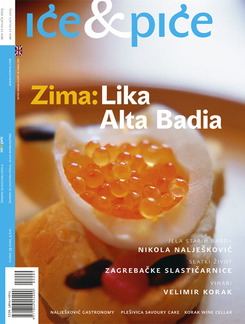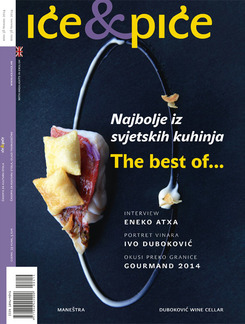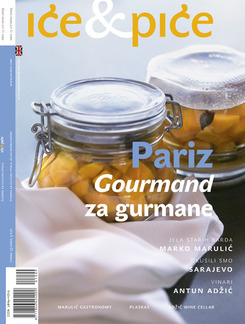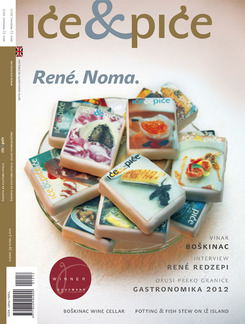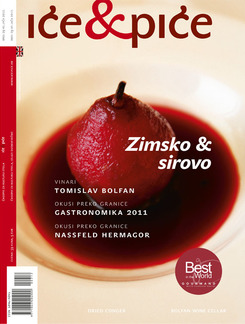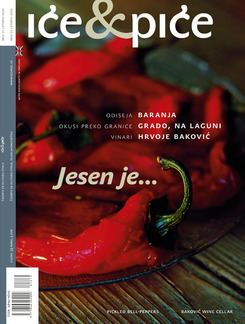Contemporary gastronomy, in its search for traditional recipes, every day discovers that Croatian history truly abounds in unique dishes in which the customs, setting and wisdom of their origins are reflected, while, handed down over the generations, their stories are kept, making the pleasure of tasting the more complete, arousing respect for and responsibility to our forebears.
On the pedestal of such treats with a tale is Rab torte. This is a really outstandingly delicious cake that is different from today’s conception of the gateau, because at the time it was created, this queen of ceremony was prepared from simple basic mixtures enriched with aromatic ingredients and lightly sprinkled with icing sugar. But simplicity of ingredients does not automatically mean a straightforward procedure, particularly in the case of Rab torte, which demands a great deal of skill, patience and love.
It is believed that Rab torte was served for the first time when Pope Alexander III, escorted by his ten galleys, was overtaken by a storm as he was crossing the Adriatic, and took cover under the cliffs and in the harbours of our islands, and thus by a quirk of fate arrived in Rab just after the renovation and enlargement of the Cathedral of the Assumption, which he consecrated on the occasion. In order to enhance this unexpected ceremony and to express their respect, nuns of the Benedictine order served him cake on the host – Rab torte. Historians say that the nuns might well have wanted to make a treat from the pope’s native country, but by chance made a different cake, from the same ingredients; another speculation is that the pope had the cake on board with him, and the hosts adopted it, for there is an Italian version with the same taste and basic composition. Irrespectively of which of the stories is correct, Rab torte is in many ways unique and quite outside the typical scope of local cooking, and until recently was known only in island waters.
Secret recipe
The original recipe for the first Rab torte is kept in the archives of the Benedictine abbey of St Andrew’s on the southern coast of Rab, where the text is written in fine handwriting on both sides of a piece of paper. It states that the cake is made of host, eggs and almonds. The quantities are not stated, and the art of making is handed down exclusively by word of month. The nuns had classes in housewifery and taught the women of the place cooking, household economics and sewing. Thus the Rab gateau belonged at the beginning only to the patricians and richer commoners of Rab. It was made for church feast days and family ceremonies such as christenings, first communions and weddings. The secrecy of the recipe was part of the identity of the city, and not even the inhabitants of the island villages knew it; the privileged circles jealously guarded it as a sign of preservation of their roots. Although in the last few years the cake has started to be made all around the island, and even further afield, sometimes with the addition of ingredients that do not property belong to it, among the few heirs who strictly respect the original recipe is Dunja Brnjac, who reveals: The secret is in the feeling in the fingertips, everything has got to be gentle, from the heart, and with a lot of love, which you have to feel and put into the cake. The mixture has to go through the fingers up to six times, and the preparation might last up to a week.
Harmony of tastes
The basic ingredient is almond, the amount and moisture of which determine the measurements for all the other ingredients. The best mixture is prepared from 600 g of almonds, or up to a maximum of one kilo. Once they came from Lune, site of a biblical landscape on the island of Page, because they have a bitterness that adds to the distinctiveness of the cake. The amount of eggs depends on the dryness of the almonds, in summer there are more, in winter fewer. The main flavour of the almonds is backed up with orange and lemon peel, and the aroma of maraschino, and all of it rests on the support of a very thin pastry, like communion wafer. For church dignitaries and big religious celebrations it would be made in the shape of a snail, but also perhaps like a heart, a number, a horseshoe, but the simplest and most frequent shape is a bar.
The finale of the preparation demands superlative skill that distinguishes the adept from the acolyte. What is left of the pastry is cut into ribbons that are used to decorate it around the edges and also fix the filling and the base, little folds being gathered gently with the fingers, while paths are shaped on the surface. The baked torte is lightly sprinkled with icing sugar and decorated with the white biancaneve flowers, and served on lace. This sweet is so delicate that it is not used ever to round off a lunch or dinner, rather it is served on its own with tea, a fine liqueur like maraschino or home made grappa from Muscat.
This indigenous speciality is today the most original souvenir of the island of Rab, which has been much aided by the Vilma Patisserie, which presents a cake called Rab Torte at domestic trade fairs and international gastro occasions. For its originality, it has won many a prize.
But we will give the centuries-old recipe of Dunja, who reveals all the pleasures of its taste: When you bite a little piece of original Rab torte, you have to feel the harmony of the almonds, oranges, lemons and maraschino. Nothing has to stick out, while the pastry melts in the mouth.

